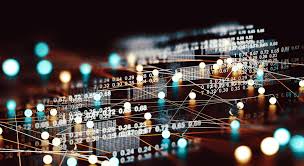Source: techrepublic.com
In 2019, enterprise demands rose for real-time and near real-time analytics, and data continued to expand its role in everyday business operations and decision-making. Enterprises will continue to build on these trends in 2020, and that will drive analytics vendors to add new capabilities and expand their offerings.
Here are eight key trends for analytics in 2020.
1. In-memory processing
In-memory costs are decreasing, and this will drive more analytics to real-time environments. The demand for real-time or near real-time analytics will require fast CPUs and in-memory processing.
Companies want the ability to instantaneously respond to online sales activities, alerts about their production infrastructures, or sudden changes in financial markets and portfolios.
2. Natural-language processing
Voice-based applications and analytics have not moved rapidly over the past few years, given the challenges of trying to capture different voice intonations and accents with accurate natural language recognition. The good news is that natural language recognition, interpretation, and mechanics have greatly improved–to the point where more analytics queries can be posed by voice command.
This is ideal in fast-paced environments like warehouse yards and logistics and in other situations that require employees to work hands-free. Natural-language processing also works well for executives and managers who want to get data by using voice commands from their mobile devices.
3. Graph analytics
Spreadsheets have been instrumental in getting companies engaged in analytics, but many companies are at an inflection point where their data and the complexity of their analytics queries are surpassing the capabilities of the common spreadsheet.
I predict graph analytics will gain traction in 2020. With graph analytics, companies can easily determine the connections between many different data points–even those that at first do not appear to be connected. Graph technology simplifies the task of linking people, places, times, and things, and can speed times to market for business insights.
4. Analytics life- cycle development
Businesses and IT departments will begin to look at their analytics apps in the same light that they look at their traditional transactional apps. IT will develop life-cycle management policies and procedures for analytics–beginning with application development and testing, and extending to launch, support, backup, and disaster recovery.
5. Augmented analytics
Corporate IT and data science departments will begin to integrate the various pieces of analytics into an organized whole. There is the baseline of rudimentary analytics, and then there is the possibility of augmenting these analytics with machine-generated data queries through artificial intelligence (AI) and machine learning (ML). Both AI and ML “learn” from data analytics repositories by observing repetitive patterns of data, processing, and outcomes, and then posing derivative queries from what is learned. AI and ML will augment–not replace–human creativity in terms of framing unique analytics queries. Because AI/ML can rapidly perceive repetitive patterns, they may be able to deliver faster times to market for certain business insights.
6. Predictive analytics
In 2019, companies continued to use analytics to gain an understanding of historical and current situations. In 2020, there will be a shift toward more predictive analytics to assess future economic conditions, risk areas, climate trends, infrastructure maintenance, and investment needs.
7. Data automation
With “dirty data” costing the US economy $3.1 trillion a year and data scientists spending up to 80% of their time cleaning and preparing data, enterprises want data automation that can eliminate human involvement in these painstaking operations. This will make data scientists’ time more productive, and speed time to market for analytics, which can obtain properly prepared and vetted data sooner.
8. IoT analytics
IoT solutions providers have primarily focused on equipping their own tools with analytics, but companies will want more. In 2020, IoT analytics will move toward a more holistic approach. Next year will be a “step off” point toward unifying the streams of IoT analytics, and input companies are getting into an integrated IoT grid that more closely reflects actual enterprise operations.
